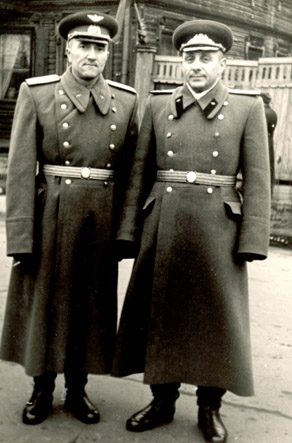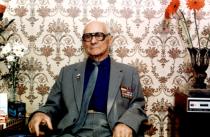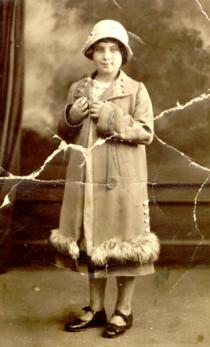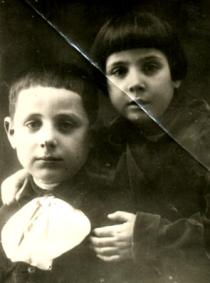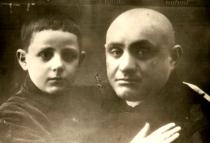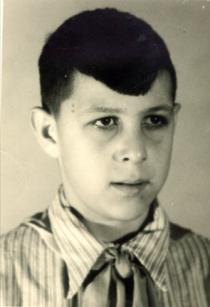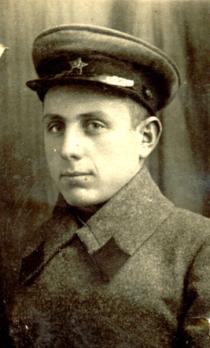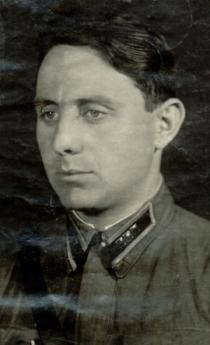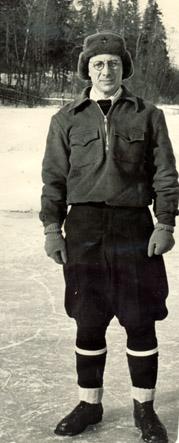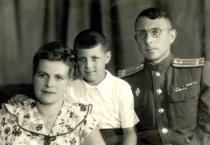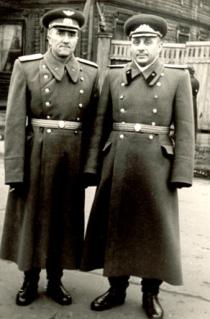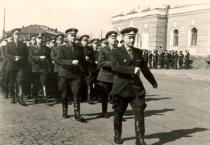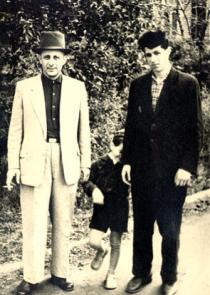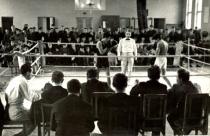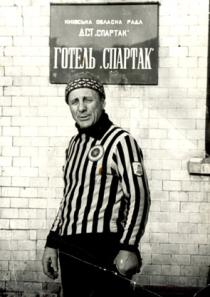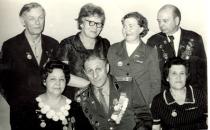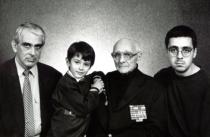This is me, lieutenant colonel Grigoriy Kagan, chief of communication of the AACD Northern Corps (on the right) with an officer of the headquarters. This photo was taken in Belomorsk in 1955.
In 1954 I was offered the post of communication chief in Moscow. It was a significant promotion for me. I finished the war in the rank of chief of division communication. A corps included 3 divisions. Of course, I gave my consent and did not even ask where this corps was located. Actually, this was the Northern Air Defense in Belomorsk, between Murmansk and Petrozavodsk, 6000 km from Moscow. This town was located on the bank of the last sluice on the Belomor-Baltic Channel. My wife, my son and I moved to where my job was.
I had to work hard to improve the communication system. What made my work much easier was that my former fellow students, who were not as good in his studies as I was, succeeded well having no 5th item. One of my former fellow students even became deputy chief of communication forces of the Ministry of Defense. My friend Mikhail Kapustin, whom I used to help with his studies on various subjects, was communication cable logistic manager in the Ministry. This helped me a lot in the future. I established convenient and extensive communication between the two radio engineering regiments of the corps (in Murmansk and Petrozavodsk) and two RE battalions at the command post. It was based on the cable lines of the Ministry of Communication that we rented. It also covered our neighbors and command posts of the Anti-Aircraft Defense forces of the country and the 22nd Air Force army in Petrozavodsk. Besides, I installed a powerful radio transmitting center in the reinforced concrete shelter that could not be destroyed even by a direct hit of a radio bomb. Actually, the anti-aircraft defense of the country included just radio engineering forces: two regiments and two battalions. This was another stupidity of the Supreme Commandment: 5 Air Force fighter divisions were not in our subordination. They belonged to the 22nd Air Force army that was under the command of the Air Force rather than the anti-aircraft defense. It was the same with the anti-aircraft artillery units equipped with 100-mm caliber guns and radio engineering facility navigation systems that belonged to the land forces. America proved this inefficiency of the anti-aircraft defense system. One day in summer 1955 a B-47 bomber took off from an US-controlled air field in Norway. It turned around insolently, and this is the only word I can find, over Petrozavodsk, the headquarters of the Northern Military district and the headquarters of the 22nd Air Force army, and flew over the Petrozavodsk-Murmansk railroad. Our anti-aircraft means reproduced this accurately on the command post of the 22nd Air Force army where General Serov was on duty. When our command point requested General Serov why he took no efforts having 5 Air Force fighter divisions available, he declared that we made up the story. So, this B-47 had no obstacles flying over our anti-aircraft means and landed on the Tule air field in Norway. Half hour later another B-47 flew the same route! And again General Serov responded to general Tabunchenko that the anti-aircraft defense was confused about something. The anti-aircraft defense in Moscow asked General Tabunchenko why we hesitated and took no efforts. The general replied that we were aware of what was happening, but we could not hit the plane by our radar set. We should have been grateful to the US commandment for this lesson! Some decisive and serious steps were undertaken. These 5 Air Force fighter regiments were assigned to the anti-aircraft defense agency. Our corps merged with the Arkhangelsk Belomorsk AACD Corps. Then the Severomorsk Corps deployed in Severomorsk north-east of Murmansk was subordinated to us. And finally the Northern and then the 10th separate AACD army covering the territory of the USSR from Vologda to the Franz-Joseph land [islands in the Arctic Ocean] and from the Finnish border to the Ural were formed. And of course, restaffing took place. General Serov was outranked and resigned. The 22nd army commander was demoted. Commander of the Northern Military district was fired. His replacement was General Tabunchenko, Commander of our corps. His three subordinates, including me, followed him to Arkhangelsk.
